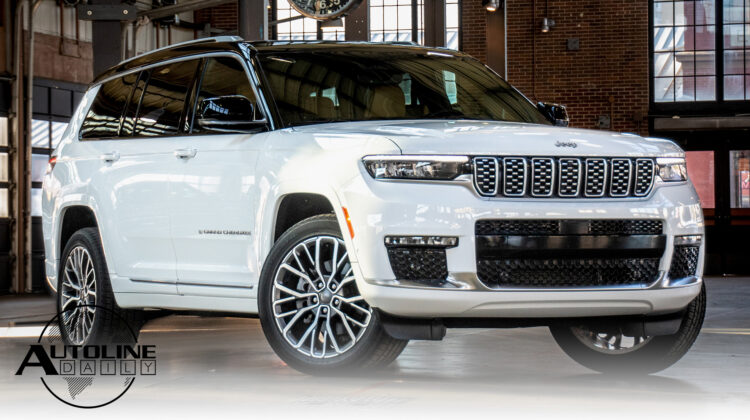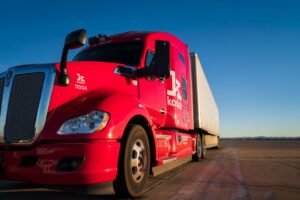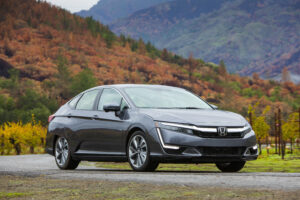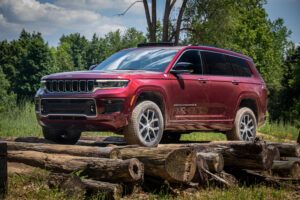
Listen to “AD #3103 – VW Drafting New U.S. EV Plan; Battery Costs Could Hurt EV Growth; Jeep Grand Cherokee L Review” on Spreaker.
Follow us on social media:
Runtime: 9:43
0:07 VW Drafting New U.S. EV Strategy
0:48 European Car Sales Continue to Recover
1:16 Bridgestone Invests in AV Truck Company
3:01 Battery Costs Could Hurt EV Growth
3:59 Diesels Still Popular with Some Europeans
4:30 Lincoln’s EV Strategy is Obvious
5:59 Honda Dropping the Clarity
6:42 Jeep Grand Cherokee L Impressions
Visit our sponsors to thank them for their support of Autoline Daily: BorgWarner, Bridgestone, Intrepid Control Systems and Schaeffler.
This is Autoline Daily, the show dedicated to enthusiasts of the global automotive industry.
VW TO ANNOUNCE NEW U.S. EV STRATEGY
With President Biden pushing a $174 billion plan to boost electric vehicle sales, Volkswagen says it’s drafting a new EV strategy for the American market. It will reveal the new plan later this year and while we don’t have any details, it will likely include building and selling more EVs. The ID.4 is its only EV available in the U.S. right now, which is manufactured at the automaker’s plant in Chattanooga, Tennessee. By next year, VW will build EVs at eight of its global factories, mostly in Europe and China. And by the end of the decade, VW plans to introduce 70 BEV models.
EUROPEAN CAR SALES CONTINUE TO IMPROVE
Car sales in Europe are improving but they’re still way below pre-pandemic levels. According to the European Automobile Manufacturers Association, sales were up 74% in May compared to a year ago when countries were in COVID lockdowns. It’s the third month in a row automakers posted an increase. However, compared to May of 2019, sales were down 25%, partly due to the semiconductor shortage.
BRIDGESTONE TEAMS WITH AV TRUCK COMPANY
Autonomous vehicles offer a number of safety benefits but when you think about trucking or package delivery when there’s no need for a human to be on board, how does an owner know when there’s a problem? Bridgestone announced it’s making a minority investment in Kodiak Robotics, a U.S.-based self-driving trucking company. Kodiak will leverage Bridgestone’s cloud-based technologies to help predict when there might be an issue with the tires. Kodiak currently operates Level 4 long-haul trucks with a safety driver on board to move freight in Texas. It hopes to launch trucks with no safety driver in the next few years.
Alfa Romeo was supposed to make a roaring comeback over the last decade. But it hasn’t happened. Sales of the Giulia and Stelvio came in far below expectations. So what’s next for Alfa Romeo? That’s what we’ll be talking about on Autoline After Hours this afternoon. We’ve got Larry Dominique, the head of Alfa Romeo North America coming on the show. So join Gary and John at 3PM eastern time later today.
ALIX PARTNERS SAYS OEMs TOO BULLISH ON EVs
Alix Partners, the consulting company, says electric cars still cost $8,000 to $11,000 more to make than cars with piston engines. It’s all about the cost of the batteries. And while battery prices are coming down, it says batteries will still cost $90 per kilowatt hour in 2030 on average. Even more, it says that even by 2028 EVs will not have the scale per platform of the average piston powered car. That is going to place an enormous cost burden on automakers. Interestingly, if you add up all the electric vehicles that global automakers say they’re going to come out with, it only reaches 35% of the market by 2030. But Alix Partners thinks automakers are too bullish. It forecasts that BEV sales will only hit 24% global market share by then.
DIESEL SALES CONTINUE TO FALL IN EUROPE
Diesels used to account for over 50% of all passenger vehicle sales in Europe but not anymore. LMC Automotive reports that diesel market share is now below 25%-half of what it used to be. But it varies by region and by segment. Diesel sales are actually going up in Italy. And they’re still going strong in the luxury segment. Over 40% of the passenger vehicles that Mercedes-Benz sells are diesels, and it’s over 30% at BMW.
LINCOLN’S EV STRATEGY IS OBVIOUS
Lincoln has 4 vehicles in its lineup in the U.S. market: the Navigator, Nautilus, Aviator and Corsair. And Lincoln says it’s going to come out with 4 BEVs. So it’s obvious where they’re going with this. Lincoln will come out with 4 electric SUVs to replace their piston-powered counterparts. But there’s going to be an overlap when both versions will be in the market. What we’d like to know is if Lincoln will keep the model names it has so carefully nurtured, or will it come up with new names for the electrics? One thing we do know is that the electrics will be built off dedicated platforms, and the first of them comes out in 2022. Here’s some of our own wild speculation. Maybe the first electric Lincoln will be the Navigator, and maybe Ford can use the chassis from the F-150 Lightning to make it happen.
HONDA KILLS THE CLARITY
More than a year ago, Honda dropped the electric version of the Clarity from its lineup. So it’s not surprising to learn that the automaker will end production of the plug-in hybrid and fuel cell versions of the Clarity in August. Honda sold less than 2,000 Clarity’s in the U.S. this year. While it did not break down sales, the majority of those were likely plug-ins, since the fuel cell is only available for lease in California. The Japanese factory that builds the Clarity is being shutdown next year. It also makes the Odyssey and Legend, which was the Acura RLX in the U.S. but it was axed from the lineup last year. Honda will continue to build the Odyssey at its plant in Alabama.
JEEP GRAND CHEROKEE L IMPRESSIONS
Jeep is hoping to attract more customers to its best-selling model, the Grand Cherokee. That’s because, for the first time, it’s going to come with a third row. Jeep calls this the Grand Cherokee L, which features a nice, little “L” badge on the driver’s side of the tailgate, just in case you’re not sure. It will also offer a standard wheelbase 2-row and 4xe plug-in hybrid versions of the all-new Grand Cherokee, but those aren’t scheduled to go into production until the end of the year. These are very easy to recognize compared to the outgoing model, just by looking at the lighting. A thin LED lighting signature is picked up on both the front and back, rather than the blockly look of before. You may also notice a little resemblance to the bigger, more expensive Wagoneer. This may be best highlighted by the rearward sloping grille. We like that Jeep designers lowered the belt-line as well. Not only does it help kick off some of the styling cues, but you feel like less of a child if you like to rest your arm on the door panel when the window is down. And it’s hard not to see that Jeep wants to push the Grand Cherokee into a more premium category. The interior is full of real leather, wood and metal accents, including an optional double-diamond stitch pattern, a little similar to what you might find in a Bentley. Under the hood there are two engine options as of now; a 3.6L V6 that makes 293 horsepower and a 357 horsepower 5.7L V8. A little more engine noise comes into the cabin than I would like, but both provide smooth power delivery and decent acceleration. When paired with the air suspension system, the all-new Grand Cherokee L has a nice ride and doesn’t feel like a huge SUV. And with three available 4X4 systems, there’s no need to worry about off-road capability. In fact, its ride height is up and it’s able to go up to 2-feet in water, which is 4 inches more than before. Overall, this is a very nice vehicle and it’s hard not to think it’s going to bring in and/or retain more customers with the new 3-row version. The Grand Cherokee L will start hitting dealer lots in the second quarter. Starting price ranges from about $38,700 to $63,700, including destination charges.
But that wraps up today’s show, thanks for watching.
Thanks to our partner for embedding Autoline Daily on its website: WardsAuto.com
Seamus and Sean McElroy cover the latest news in the automotive industry for Autoline Daily.










